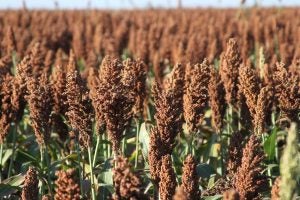Sorghum, commonly referred to as milo, is a crop that not many people would link to farming in my location of Virginia. It is not as prevalent as corn, beans, wheat, or many other common grains/grasses grown in the agricultural industry here. In recent news relating to China, many people have taken a different stance on the crop and have backed away from producing it. For those who haven’t thought about growing sorghum, lets dive deep into the crop to see just how much of a hidden gem it is.
Sorghum is a very nutrient-use efficient crop. Its ability to yield and grow in dry, marginal land is above the rest. Its unique makeup and genetics allows for it to thrive where other crops cannot. It also has a wide variety of uses:
- Grain sorghum is higher in starch and can be applicable to animal health and nutrition, human health and nutrition, and ethanol production.
- Animal consumption.
- Great as a cover crop option.
- Human consumption.
So, just why would you opt to grow sorghum versus your other traditional row crops? Well, the answer lies into more of the input side of the grain. Statistically proven, sorghum requires much less nutrient input and water than other crops. Seed cost is also lower than other crops, offering another incentive on lowered input cost. In a changing world where water resources are becoming scarcer and valuable and low-quality land expectations are becoming higher, sorghum is a crop that can fit into the expanding need for traditional agricultural operations as well as growing industrial processes. Forage sorghum’s yields are comparable to corn silage, but at a much lower cost to the farmer. Sorghum has even proven to yield more on a per ton basis on water than corn!

Of course, China was a big importer of U.S. sorghum before the recent tariff implications caused some issues on domestic markets. However, with lower breakeven costs, farmers are still able to effectively market the crop to suit their financial needs. Many end users still buy sorghum as a feed product, offering a much better price for producers than traditional grain marketing companies. Since the product is going directly to their animals and not to another market, prices are often higher and appealing. As sorghum can be used to produce biofuels, many ethanol plants have also decided to buy sorghum — this also plays a role into the price. Ethanol plants produce huge amounts of product, requiring huge amounts of input. So demand is still prevalent.
The biggest benefit stemming from this crop, upon recent study, seems to be the forage benefit for livestock. Lower input costs, opportunity for income from the grain itself, and grazing benefit are extremely appealing for a lot of cattle operators. Once harvested, cows can be let loose on the stalks left behind, which are heavily leafed and nutritious. Adding it to silage in replacement of corn is also another viable option for producers. Many have seen great success in lowering their feed costs from doing this.
Whether new to sorghum or not, it is definitely a crop to explore production wise. Its unique makeup allows for it to thrive in conditions that are becoming more prevalent as we move forward in the agriculture industry. Its ability to produce on marginal land and its hearty performance make it a leading option in a market that is demanding alternative inputs. It is definitely something to consider for anyone looking to try something new!



